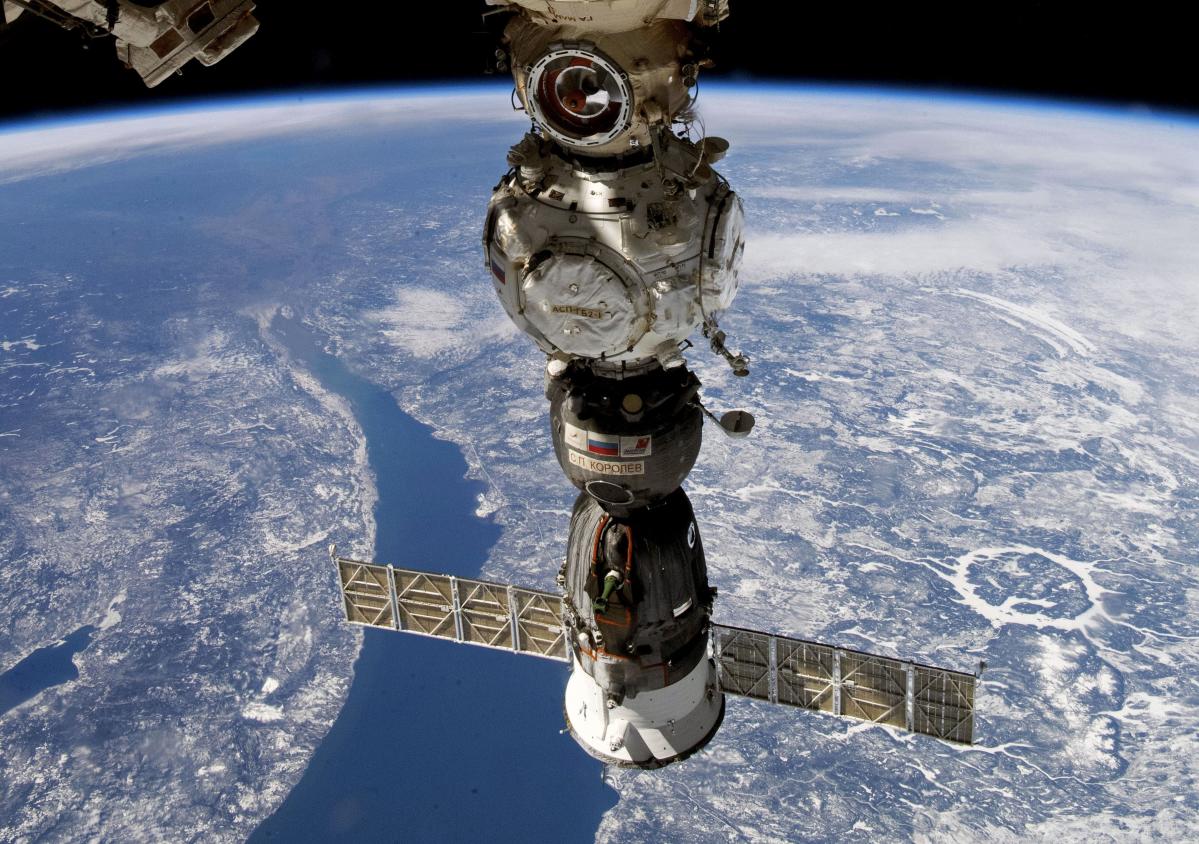MOSCOW (AP) — Russian aerospace company Roscosmos said Monday that a coolant leak from a Russian space capsule attached to the International Space Station would not require crew evacuation, but the agency kept open the possibility of launching a replacement capsule if necessary. .
Roscosmos said an expert panel would determine later this month whether the Soyuz MS-22 capsule can be safely used by the crew for its planned return to Earth or whether it should be discarded and replaced.
It said the next planned launch of a Soyuz would be in March, but could be accelerated if necessary.
The Soyuz MS-22 leak was spotted last week as a pair of Russian cosmonauts were about to leave the station for a planned spacewalk. Russian Mission Control aborted the spacewalk when ground specialists saw a stream of fluid and particles emanating from the Soyuz on a live video feed from space.
Roscosmos and NASA have both said the incident did not pose any danger to the station’s crew.
Roscosmos said the leak may have been caused by a micrometeorite or piece of space debris that hit one of the capsule’s external radiators.
The company said Monday that the leak caused the temperature in the crew compartment of the capsule to rise to 30 degrees Celsius (86 degrees Fahrenheit). The temperature in the equipment section initially rose to 40 degrees Celsius (104 degrees Fahrenheit), but dropped to 30 degrees Celsius (86 degrees Fahrenheit) after ground experts switched some of the capsule’s systems, Roscosmos said.
Roscosmos said the crew used fans in the Russian segment to blow cold air into the capsule to lower the temperature in the cockpit to a comfortable level.
“The temperature rise on the Soyuz MS-22 spacecraft is tolerable and not critical to equipment operation or crew health in case they need to be on the spacecraft,” Roscosmos said, adding that tests of the ship’s control system determined that it was not affected by the incident.
The aerospace company said an inspection of the capsule’s surface with a camera on a Canadian-built robotic arm helped pinpoint the location of the coolant leak.
Prokopyev, Petelin and NASA astronaut Frank Rubio used Soyuz MS-22 to arrive at the International Space Station in September, and it has served as a crew lifeboat. The capsule would return part of the space station crew to Earth in March as part of regular rotations.
Along with Prokopyev, Petelin, and Rubio, four other crew members are currently on the space outpost: NASA astronauts Nicole Mann and Josh Cassada; Koichi Wakata of the Japan Aerospace Exploration Agency; and Anna Kikina of Roscosmos.

